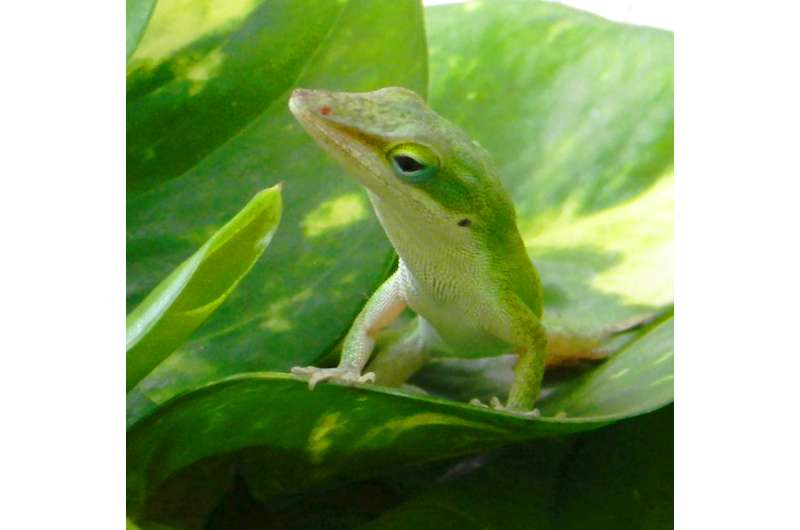Point way to human regeneration

Any kid who pulls on a lizard tail knows it can drop off to avoid capture, but how they regrow a new tail remains a mystery. Now, researchers at the Translational Genomics Research Institute (TGen) and Arizona State University (ASU) have identified tiny RNA switches, known as microRNAs, which may hold the keys to regenerating muscles, cartilage and spinal columns.
In a study published today in the scientific journal BMC Genomics, ASU and TGen scientists for the first time identified three microRNA's - a which turn genes on and off - that are associated with the regeneration of tails in the green anole lizard, Anolis carolinensis.
Using next-generation genomic and computer analysis, this interdisciplinary team of scientists hope their findings, following nearly 6 years of research, will help lead to discoveries of new therapeutic approaches to switch on regeneration genes in humans.
"Since microRNAs are able to control a large number of genes at the same time, like an orchestra conductor leading the musicians, we hypothesized that they had to play a role in regeneration," said senior author Dr. Kenro Kusumi, a Professor in ASU's School of Life Sciences and Associate Dean in the College of Liberal Arts and Sciences, and an adjunct faculty member at TGen. "Our earlier work found that hundreds of genes are involved in regeneration, and we are very excited to study these three new microRNAs."
Dr. Elizabeth Hutchins, a Post-Doctoral Fellow in TGen's Neurogenomics Division, and co-lead author of the study, said she hopes this investigation eventually enables such things as regenerating cartilage in knees, repairing spinal cords in accident victims, and reproducing the muscles of injured war veterans.
"It is the translational nature of this work - how it could eventually be applied to people - that led to my interest in this study," said Dr. Hutchins, who graduated from ASU's Molecular and Cellular Biology Program. "For example, we currently don't have the ability to regrow knee cartilage, which would really help someone like my grandmother."
"This work highlights the importance of tiny RNA molecules in the tissue regeneration process, and showed for the first time an asymmetric microRNA distribution in different portions of the regenerating lizard tails," said Dr. Marco Mangone, a co-author and Assistant Professor with ASU's School of Life Sciences and Biodesign Institute. "It seems like microRNAs may play an active role in this process, and are potentially able to shape the regenerating lizard tail like playdough."
More information: Elizabeth D. Hutchins et al. Differential expression of conserved and novel microRNAs during tail regeneration in the lizard Anolis carolinensis, BMC Genomics (2016). DOI: 10.1186/s12864-016-2640-3




















